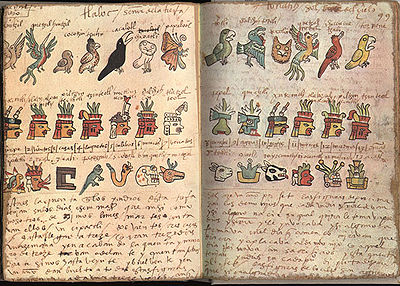- Codex Tudela
-
 Folios 98 verso and 99 recto, showing aspects of the Aztec calendar: the birds of the day, the lords of the night, and the day signs.
Folios 98 verso and 99 recto, showing aspects of the Aztec calendar: the birds of the day, the lords of the night, and the day signs.
The Codex Tudela, named after José Tudela de la Orden, is a 16th century pictorial Aztec codex. It is based on the same prototype as the Codex Magliabechiano, the Codex Ixtlilxochitl, and other documents of the Magliabechiano Group.
Little is known about the codex's history. The Spanish government bought the manuscript when it was rediscovered in 1940, and it is now held by the Museo de América in Madrid.
Further reading
- Boone, Elizabeth Hill (1983). The Codex Magliabechiano and the Lost Prototype of the Magliabechiano Group. Berkeley: University of California Press.
- Robertson, Donald (1994). Mexican Manuscript Painting of the Early Colonial Period: The Metropolitan Schools. Norman: University of Oklahoma Press.
Categories:- Manuscript stubs
- Mesoamerica stubs
- Mesoamerican codices
Wikimedia Foundation. 2010.
